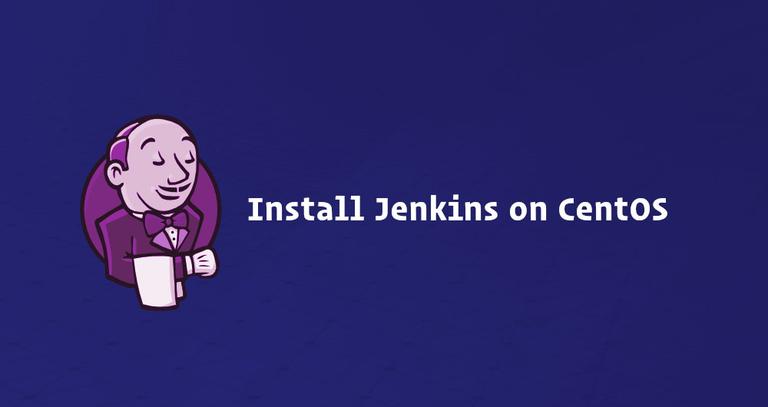How to Install Jenkins on CentOS 7

Jenkins is an open-source, Java-based automation server that offers an easy way to set up a continuous integration and continuous delivery (CI/CD) pipeline.
Continuous integration (CI) is a DevOps practice in which team members regularly commit their code changes to the version control repository, after which automated builds and tests are run. Continuous delivery (CD) is a series of practices where code changes are automatically built, tested and deployed to production.
This tutorial, will walk you through the steps of installing Jenkins on a CentOS 7 system using the official Jenkins repository.
Prerequisites
Before continuing with this tutorial, make sure you are logged in as a user with sudo privileges .
Installing Jenkins
To install Jenkins on your CentOS system, follow the steps below:
- Jenkins is a Java application, so the first step is to install Java. Run the following command to install the OpenJDK 8 package:
sudo yum install java-1.8.0-openjdk-develThe current version of Jenkins does not support Java 10 (and Java 11) yet. If you have multiple versions of Java installed on your machine make sure Java 8 is the default Java version .
- The next step is to enable the Jenkins repository. To do that, import the GPG key using the following
curlcommand:curl --silent --location http://pkg.jenkins-ci.org/redhat-stable/jenkins.repo | sudo tee /etc/yum.repos.d/jenkins.repoAnd add the repository to your system with:
sudo rpm --import https://jenkins-ci.org/redhat/jenkins-ci.org.key - Once the repository is enabled, install the latest stable version of Jenkins by typing:
sudo yum install jenkinsAfter the installation process is completed, start the Jenkins service with:
sudo systemctl start jenkinsTo check whether it started successfully run:
systemctl status jenkinsYou should see something similar to this:
● jenkins.service - LSB: Jenkins Automation Server Loaded: loaded (/etc/rc.d/init.d/jenkins; bad; vendor preset: disabled) Active: active (running) since Thu 2018-09-20 14:58:21 UTC; 15s ago Docs: man:systemd-sysv-generator(8) Process: 2367 ExecStart=/etc/rc.d/init.d/jenkins start (code=exited, status=0/SUCCESS) CGroup: /system.slice/jenkins.serviceFinally enable the Jenkins service to start on system boot.
sudo systemctl enable jenkinsjenkins.service is not a native service, redirecting to /sbin/chkconfig. Executing /sbin/chkconfig jenkins on
Adjust the Firewall
If you are installing Jenkins on a remote CentOS server that is protected by a firewall you need to port 8080.
Use the following commands to open the necessary port:
sudo firewall-cmd --permanent --zone=public --add-port=8080/tcpsudo firewall-cmd --reload
Setting Up Jenkins
To set up your new Jenkins installation, open your browser and type your domain or IP address followed by port 8080:
http://your_ip_or_domain:8080
A screen similar to the following will appear, prompting you to enter the Administrator password that is created during the installation:

Use the following command to print the password on your terminal:
sudo cat /var/lib/jenkins/secrets/initialAdminPasswordYou should see a 32-character long alphanumeric password as shown below:
2115173b548f4e99a203ee99a8732a32
Copy the password from your terminal, paste it into the Administrator password field and click Continue.

On the next screen, you will be asked whether you want to install the suggested plugins or to select specific plugins. Click on the Install suggested plugins box, and the installation process will start immediately.

Once the installation is complete, you will be prompted to set up the first administrative user. Fill out all required information and click Save and Continue.

On the next page, you will be asked to set the URL for the Jenkins instance. The URL field will be populated with an automatically generated URL.

To complete the setup confirm the URL by clicking on the Save and Finish button.

Finally, click on the Start using Jenkins button and you will be redirected to the Jenkins dashboard logged in as the admin user you have created in one of the previous steps.

If you’ve reached this point, you’ve successfully installed Jenkins on your CentOS system.
Conclusion
In this tutorial, you have learned how to install and complete the initial configuration of Jenkins on CentOS/RHEL based systems. You can now visit the official Jenkins documentation page and start exploring Jenkins’s workflow and plug-in model.
If you have any questions, please leave a comment below

